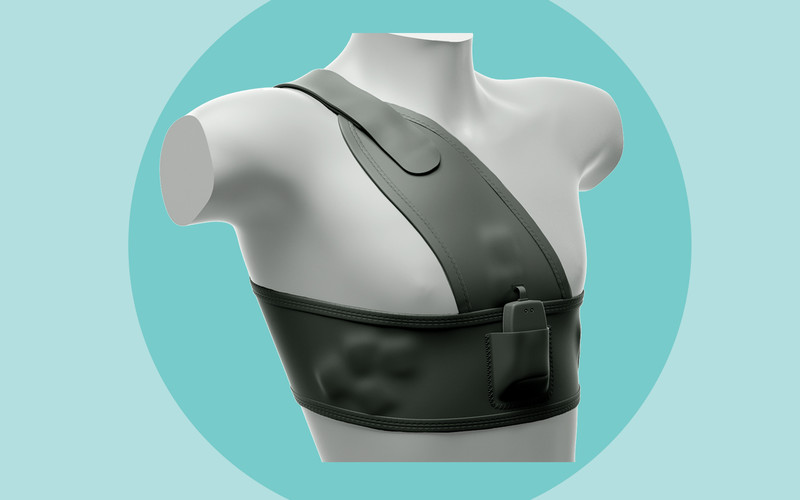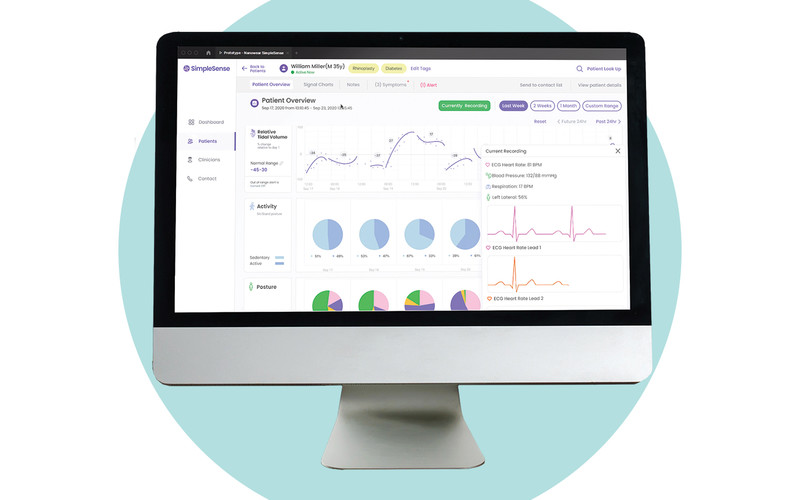Advances Toward Diagnostic Patient Care
Nanowear tested wearable technology for remote patient monitoring at New York City-area health systems in 2020.
A clinical trial evaluated Nanowear’s SimpleSENSE adjustable undergarment as a comprehensive diagnostic tool. It captured real-time temperature, systolic and diastolic blood pressure, blood flow hemodynamics, lung volume and fluid, and electrocardiogram readings.
The pandemic is showing patients, providers and payers the long-term need for more robust remote and continuous patient diagnostic tools, Varadan says.
“COVID-19 taught us that looking at all of those different systems in a vacuum is not really getting us to a full signature to be able to assess the risk of a patient,” he says. “All of these systems in the body work together.”
READ MORE: The benefits of remote patient monitoring are wide ranging.
More Clothing Options With Wearable Technology
Socks, gloves and vests with embedded wearable technology to measure movement are just some of the prototypes in development at the Computer Science and Artificial Intelligence Lab (CSAIL) at the Massachusetts Institute of Technology. Partnering with the Toyota Research Institute, the university is testing sensor-embedded textiles to measure movement with different attributes depending on where they are worn on the body. For example, socks can predict motion and measure a user’s posture, and a vest can assess poses and movement along with where the user is contacting other surfaces.
People test the “smart clothes” by wearing them during their regular activities, says Yiyue Luo, a doctoral student at CSAIL. The garments are compatible and easy to integrate with current textile manufacturing processes, Luo adds.
“The socks and vests are made of mostly off-the-shelf, normal acrylic knitting yarn and a few functional fibers,” Luo says. “The functional component comes from the functional fibers. It was made in our lab and is able to convert pressure stimulus into electrical signal. Their weight is very similar to a normal sock or vest.”
Luo and the research team at CSAIL say the smart clothing items have future uses for rehabilitation, assisted care facilities and athletic training.













